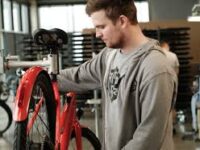How to choose and benefits of walking
We must bear in mind that choosing the shoes we will use for walking is much easier than when we look for them for running. In reality, there is an absolute rule to choose walking shoes: find a pair of shoes that are comfortable . Of course, it’s not enough just to wear it, but you also have to take a few steps, but that’s enough womens walking shoes.
For walking, comfort is the most important thing. The usual factors we take into account when choosing running shoes are not that relevant. The weight of the runner, the type of footprint (pronator or neutral), or how light they are must be considered, but normally the most important thing is that they are comfortable (Warning! If you have medical problems with your foot it is best that you see an expert before deciding which shoes to use).
A matter of preference
Some people prefer soft shoes, while others like stiff ones more. Like there are those who want a very flexible shoe and there are those who want it a little more solid. It’s up to you to figure out which one suits you best. Another element to consider is the width of the walking shoes . It is important to find a balance between grip on the foot and space for the toes and air circulation. Some opt for large, roomy shapes and others choose shoes with a much tighter upper. All options are equally good or bad because it depends on personal preference.
That said, it is true that there are characteristics that tend to be liked in a rather generalized way, such as the fact that the shoes are very breathable.
Cushioned shoes usually give good results . They tend to be very soft and comfortable. Another advantage is that they reduce the impact of walking impacts; therefore, they are ideal if you want to take long walks especially on uneven ground. The big running brands, such as Asics, New Balance or Brooks have made very comfortable models that are great for those who want shoes for long walking.
Walking improves:
- Muscle tone: the muscle fiber (supplied with more blood) is oxygenated and strengthened. The main muscles of the body are involved, not only those of the lower limbs but also those of the upper limbs, thus allowing a general toning;
- The joints: moving naturally, they maintain a high degree of elasticity in the tendons and ligaments;
- The bone tissue: it remains compact, preventing the risk of premature deterioration of the skeleton;
- The heart: it is stimulated to increase mass and become more efficient;
- Blood circulation: the walls of the vessels become more elastic and the blood flows meeting less resistance. This helps reduce blood pressure and cholesterol (which is essential forpreventing heart problems and risks of heart attacks and stroke.












